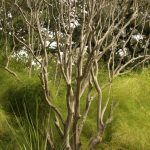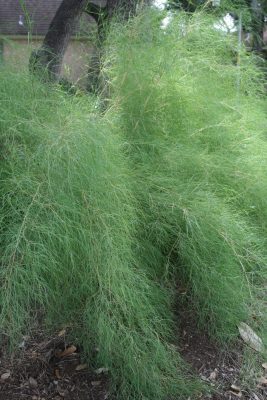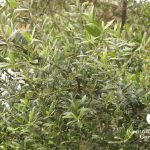My heartleaf skullcap disappeared in the heat. Will it return?
Thanks to Chris Busse for this great question!
And yes, it will! Heartleaf skullcap (Scutellariaovata) is one of the relatively few plants that go dormant in the summer, instead of the winter, thus defying our in grained view of how plants behave in response to seasonal changes. We’re quite accustomed to plants going dormant in the winter, but usually around here, if something dies back in the SUMMER, it actually IS dead.
Since plants can’t just get up and walk away when the weather gets bad, they have to adopt other strategies to deal with the changing seasons. Plants that are native to our temperate climatic zone usually respond to COOLER temperatures and SHORTER days by going to sleep to avoid potentially harmful clashes with the cold of winter.
But certain plants may also respond to the stress of extreme heat and drought,and the LONG days of INTENSE sunlightin the same manner-by hunkering down for a little nap until the situation improves.
Heartleaf skullcap does just fine here in our Central Texas winters, but doesn’t care so much for our hot, dry summers. Even in “normal” summers, with a few DAYS, rather than a few MONTHS of temperatures over a hundred degrees, heartleaf skullcap more often than not avoids heat stress by dying back to the ground in summer.
In fall, it re-sprouts from underground stems. In fact, with October’s cooler temperatures, Chris has seen her rebound.
Consider planting this native groundcover under winter dormant perennials. The silvery fuzzy leaves and later flowers will fill in the blank spaces. When it goes underground for summer, your hot-weather perennials will be back to get the spotlight.

 John G. Fairey
John G. Fairey Matt Turner
Matt Turner Matt Turner’s Plant List
Matt Turner’s Plant List Daphne Richards
Daphne Richards
 Merredith Jiles’ Drought Survivors
Merredith Jiles’ Drought Survivors Merredith Jiles’ Watering Techniques
Merredith Jiles’ Watering Techniques Merrideth Jiles
Merrideth Jiles